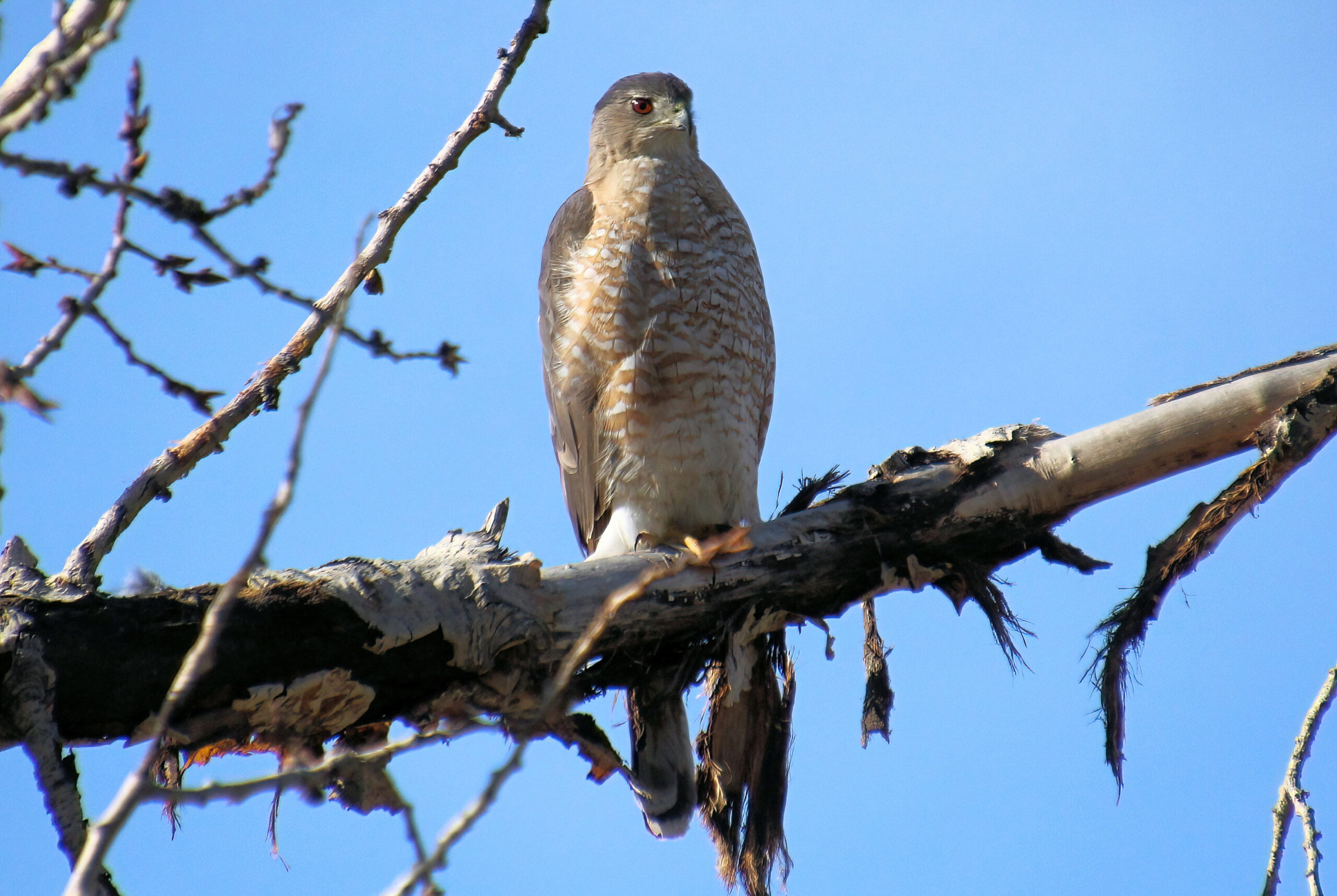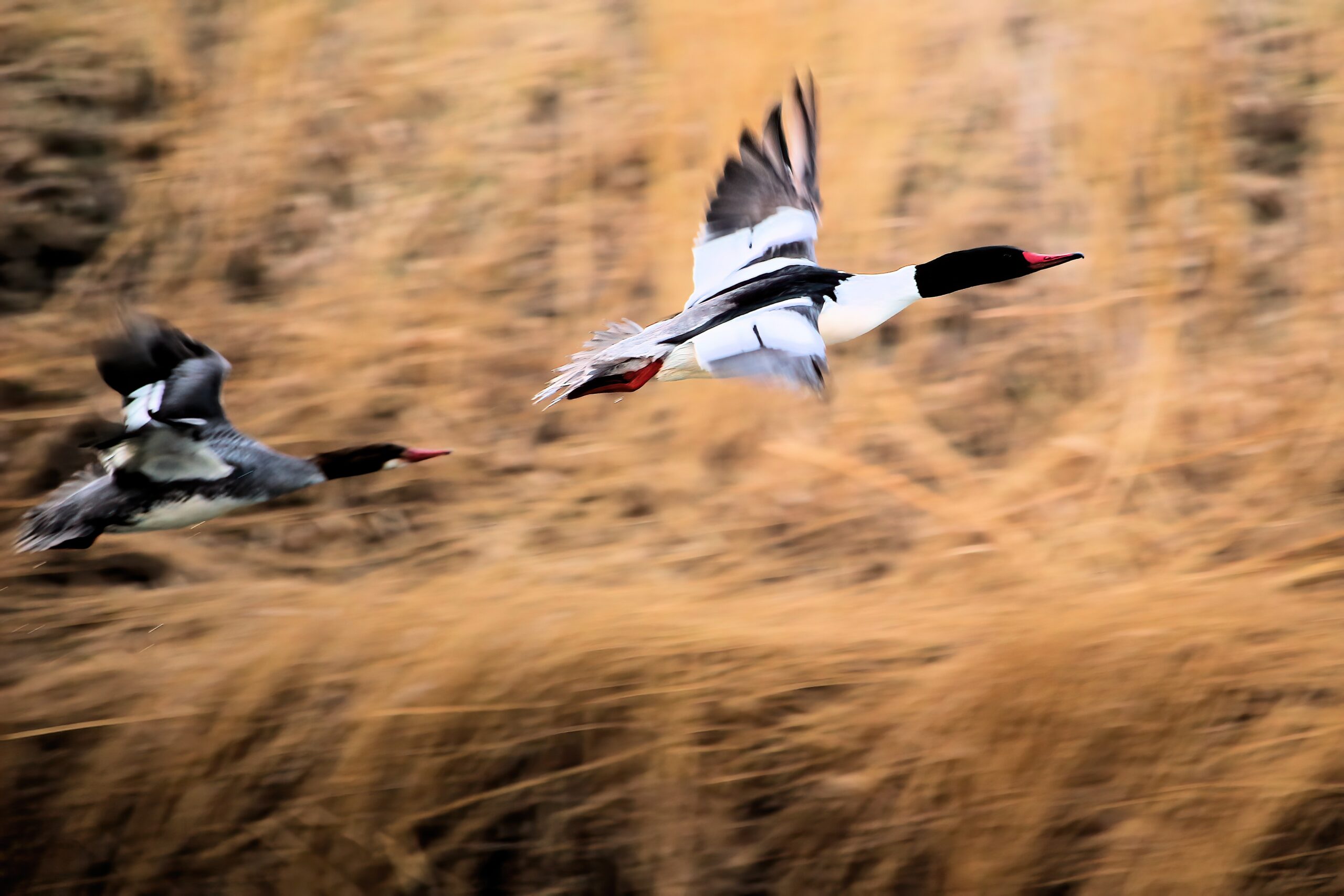Although owls are a main attraction for bird watchers, raptors and accipiters are also admired. Falcons, hawks and eagles are feared by many other species without question. One such accipiter is the Cooper’s Hawk, a bird of prey that sports rounded, short, broad wings, long legs and tail, all adapted for nimble flight in forested areas. Named in 1828 by Charles Lucien Bonaparte in honour of friend and fellow ornithologist, William Cooper, this hawk captured our attention last spring with a few sightings.
While taking pictures during the “golden hour” on the north side of Lake Chestermere in mid-April, I had the good fortune of having a Cooper’s Hawk land on a nearby aspen tree branch. Admiring its long tail, red eyes and dark blue-grey color, I took a few photos before the hawk flew towards a group of thoroughly frightened European Starlings. A day later, while birding at Queen’s Park Cemetery in Calgary, we were able to park right under a male Cooper’s Hawk perched on a long tree branch. Elaine took the opportunity to complete a 360 degree set of photographs. In late August three juvenile Cooper’s Hawks provided much to watch, between listening to their screes and trying to catch a black squirrel in Confederation Park.
Adult and juvenile are the two age classes for the Cooper’s Hawk. About the size of a crow, this hawk is steel gray-blue above with reddish bars on the underparts and dark bands on the tail feathers. Females are the larger of the two sexes. Males are more vibrantly colored with finer barred underparts, bluer upper wings and grey cheeks. . Eye color changes as this hawk matures, is amazing. Eyes begin with a yellow-green hue, turning yellow-orange in the hawk’s first spring, eventually changing to a dark red in adulthood. Juveniles tend to have more shades of brown over much of the body and head and follow the eye color changes as they age.
In addition to starlings, Mourning Doves, Rock Pigeons, American Robins, Northern Flickers, pheasants and grouse are diet favorites. Cooper’s Hawks won’t pass up delicious mammals like mice, rabbit, bats and squirrels. When prey is caught, it will be squeezed to death within the grip of the talons, whereas falcons bite to kill their prey. When flying through woodlands and forests in pursuit of prey, this hawk will accelerate in speed. In one study of 300 Cooper’s Hawk skeletons, 23% of the them had healed-over fractures of chest bones, revealing the crashing nature of many pursuits.
For me, the great challenge is identifying the differences between a Cooper’s Hawk and the Sharp-Shinned Hawk, a very similar looking accipiter. The latter tending to be somewhat smaller, except the females who can be as large as a male Cooper’s Hawk. Head size is small with the Cooper’s noggin appearing larger. The Sharp-Shinned Hawk has thinner, pencil-like legs while the Cooper’s have shorter, thicker legs. It’s truly any out in the field experience one can appreciate the flight skills of these accelerating accipters.








